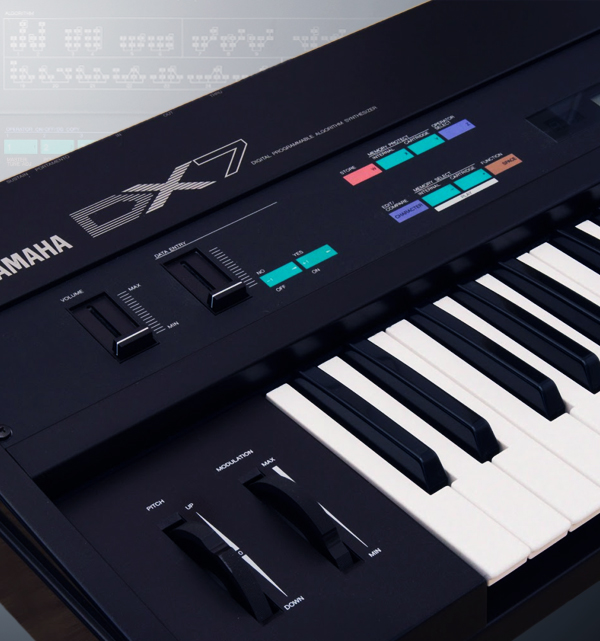
Lately there's been a bit of a re-kindling of interest in FM synthesis. FM never really went away, but recently we've seen hardware releases from Korg and Yamaha as well as the increased popularity of software, like Native Instruments' FM8. Then with the 2018 NAMM Show, Elektron threw their hat in the ring with the announcement of Digitone, an 8-voice polyphonic FM desktop synth. Digitone does some interesting things with the traditional FM synthesis architecture and according to Elektron, it's all in the name of accessibility (which FM has a reputation for lacking). With that in mind we wanted to take a very basic look at what FM is and what it's capable of.
John Chowning discovered FM synthesis in 1967, while working at Stanford University. He found that by taking one sound source (oscillator) and using that to modulate the frequency of another, within the audible range (20 Hz - 20 kHz) you could create new and harmonically rich timbres. By the late 1970's this modern synthesis method was licensed and implemented in new instruments, but it was Yamaha who made FM synthesizers commercially viable in 1983, with the release of the DX7. The DX7 became one of the most popular synthesizers of all time; it was affordable due its digital components, stayed in tune, (unlike many of it's analog counter-parts) and could remember and recall settings. Subsequently it's iconic sounds have been littered throughout popular music ever since.
Most popular synthesizers use "subtractive" synthesis, meaning their oscillators generate a harmonically rich starting point, such as a square or saw wave - think MiniMoog. This sound is then shaped and sculpted using the instruments filter section, where you carve away at the sound using the filter cut-off and resonance to remove or accentuate existing frequencies. FM works in an opposite fashion by building up harmonically rich sounds from a starting point without any complex frequency content. FM usually begins with a sine wave oscillator, in FM this sinusoidal starting point is called the "carrier" and contains no harmonic complexity.
From here, another oscillator is used to modulate or rapidly move the frequency of the carrier (think of it as extremely fast vibrato). How fast this "modulator" oscillates is controlled by its "ratio". If you slow the ratio right down the carrier will slowly pitch up and down, similar to how an LFO would modulate pitch. However if you increase the ratio, the frequency of the carrier will osculate faster and faster and new frequencies (partials) begin to appear either side of the fundamental frequency, these are called sidebands. These sidebands give the output signal its harmonic content. The important thing to remember from all this is that you never actually hear the modulator; you only hear its effect on the carrier.
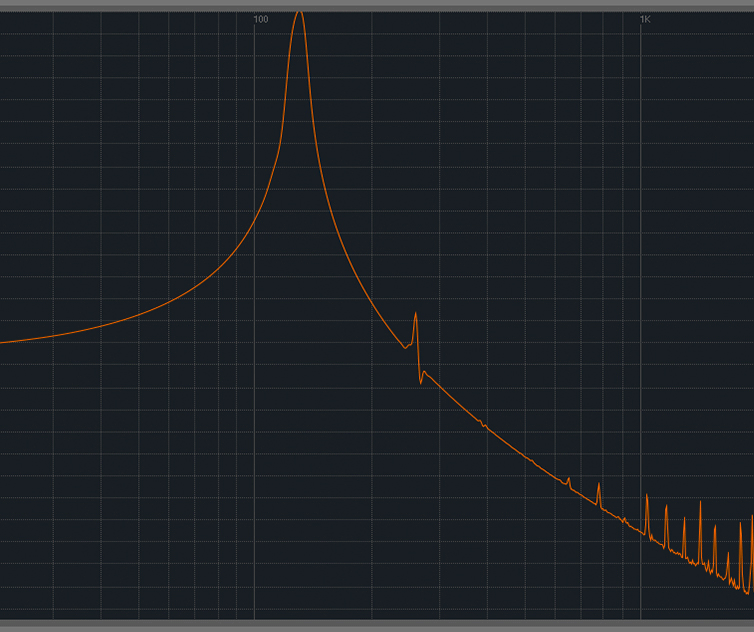 Partials being added to the original sine wave carrier as modulation is increased
Partials being added to the original sine wave carrier as modulation is increased
The next step is to create more complex sounds by changing the rate of these modulations over time using envelopes. Typically, each oscillator (modulator or carrier) is paired with its own envelope generator, which controls the oscillator's output amplitude. In FM this combination of elements is called an "Operator". The more Operators a synth has the more complex sounds you can create.
Most subtractive synthesizers use envelopes to add interest to sounds by controlling things like filter parameters (removing frequencies). But the crux of FM is controlling the addition of frequencies to build up a sound so you don't require a filter to then remove them. The DX7, for example, had no filter section. In FM, amplitude envelopes work similarly to filter envelopes in subtractive synthesis; they determine the modulation of an operator over time and thus add or decrease harmonic content, much like a filter.
As mentioned earlier the higher the number of operators available, the more synthesis options you have. This is achieved by configuring the operators in different routing arrangements (what modulates what). For instance you may have a four operator synth (operators A, B, C & D) and configure operators B, C & D to all modulate the carrier A. You may also have a configuration where A & B are carriers and C is modulating only A while B is being modulated by both C & D. These configurations of operators are known as "algorithms". Most FM synthesizers have a set number of selectable algorithms; the more operators available, the more routing options you have within an algorithm and the more complex your patches can become. For example Digitone has 8 selectable algorithms, Ableton's Operator has 11 while the classic Yamaha DX7 had 32, however some synths do actually allow you to create your own algorithm configurations.
FM has its own very unique sound characteristics; it's textures and timbres lend themselves nicely to the creation of bells, electric pianos, plucky and percussive sounds along with some now classic bass patches, but it's just as well known for more complex in-harmonic patches. However, FM does have a reputation for being difficult to program. Much of this has to do with the amount to adjustable configurations, parameters and overall permutations possible with FM. This means that FM synths often require a lot of "menu-diving" and lack real time "tweakabilty", you couldn't fit a knob-per-parameter layout on the front panel of a synthesizer. All that said, FM is really rewarding once you get the basics down and an extremely powerful tool. We've only covered some basics here, but believe us when we say you can go deep down the rabbit hole with FM synthesis!
Finally, we're going to take a look at some of the FM options on the market today:
Hardware
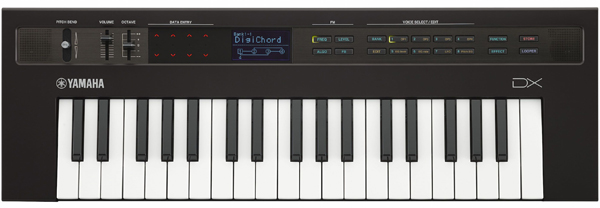
Yamaha ReFace DX: A four operator, 8 voice FM synth with 12 algorithms and a three octave keyboard with mini keys. It's a re-imagining of Yamaha's classic DX range of synthesizers, but adds in-built FX (touch wah, flanger, phaser, chorus, delay, reverb and distortion) and continuously variable feedback on every operator to widen the sound creation possibilities.
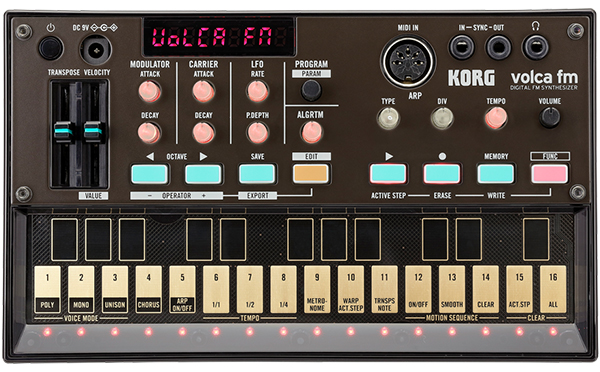
Korg Volca FM: This iteration crams a lot into the Volca form factor. It basically a DX7 in a box, although it only has three voices . Six operators with 32 algorithms mean it has basically the same internal structure of the DX7. Korg add to this with a 16 step on-board sequencer and chorus effect. It also reads Sys-Ex files, so you can save or load banks of patches (load up some of those classic DX patches into the Volca FM). Obviously the Volca design isn't the most efficient for editing the FM architecture, but it does allow you access all the parameters via menus on the front panel and there is at least one, that we know of, third-party editor online. Plus, you'll be hard pressed to find a more affordable, hardware FM synth with this many features.
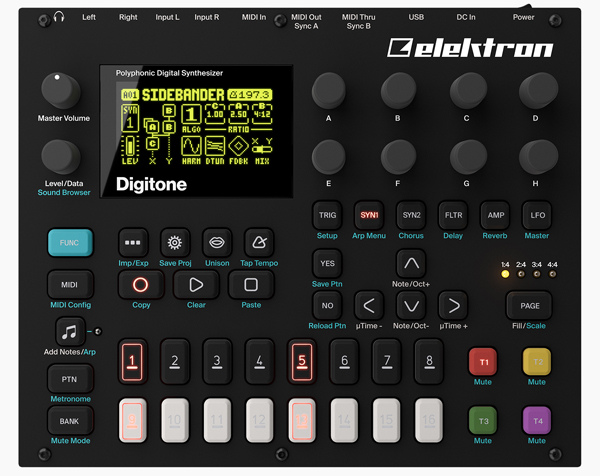
Elektron Digitone: Elektron have put a bug emphasis on accessibility with the Digitone. The core idea is take a 4 operator, 8 voice polyphonic FM synth with 8 algorithms - all the things you need to cook up some FM goodness and then channel that through a more normal synthesis process by adding multi-mode filters, LFO's and some of the other elements you'd associate wit the more common subtractive synthesis. Basically, give you FM in a package that's a little more familiar to deal with. It also has a polyphonic sequencer and an effects section with reverb, delay, chorus and overdrive.
Software
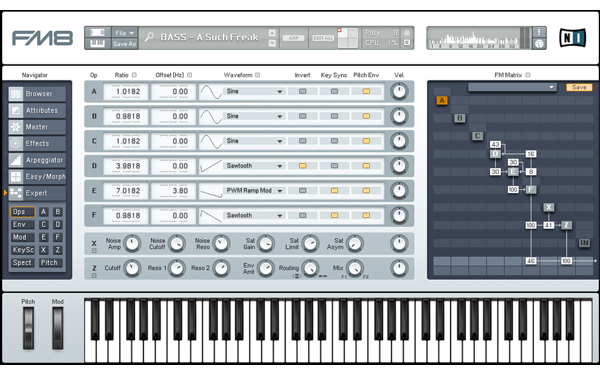
FM8: Part of Native-Instruments Komplete software package, FM8 takes its inspiration from the DX7 but adds some extra functionality. It features an "Easy Edit Page" that offers a clearly-designed interface with simple controls that adjust more complex parameters automatically as well as the ability to jump into more advanced parameters. It also contains an arpeggiator, sound morphing feature and a large selection of effects. The FM8 library contains over 1200 expertly-designed presets, so even if you don't feel like jumping into FM programming, there's plenty of content available to fuel creativity.

Operator: Part of Ableton Live's Suite package, Operator is a nod to traditional FM synthesis, with the cool addition of selectable waveforms (not just sine) and even the ability to create your own waveform. It offers four operators, 11 algorithms and is Ableton native so, obviously works great in that environment. Overall Operator is complex enough, while still accessible and a great first stop for FM beginners.
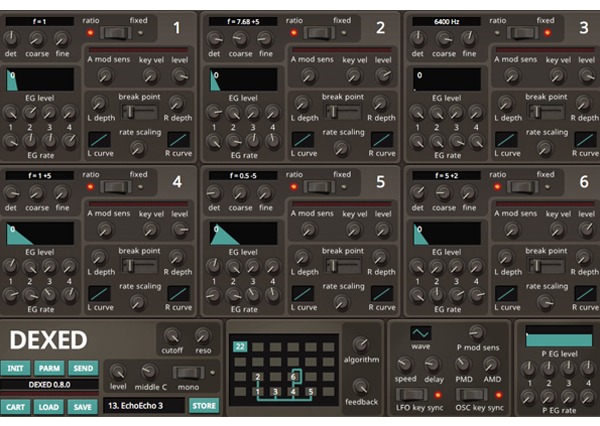
dexed: A free DX7 clone, that may on launch look a little daunting, but is a fantastic starting point for someone new to FM. Plus, it's free!